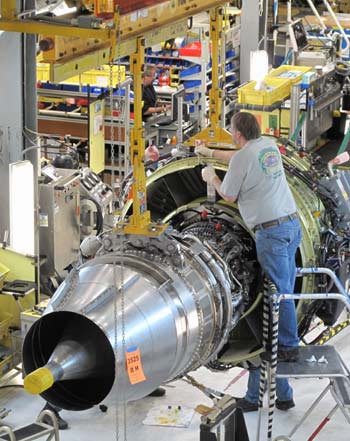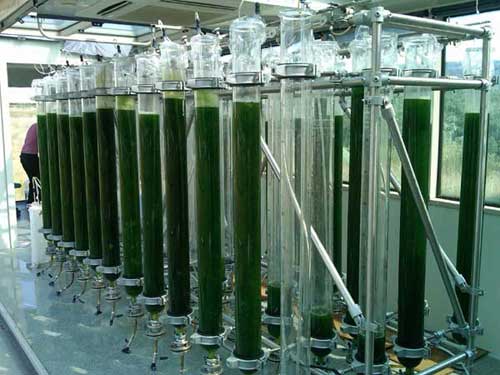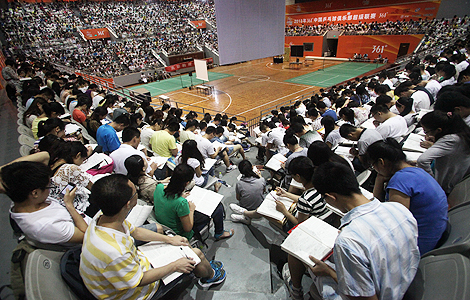

 |
|
Technicians work on engine at a Boeing plant. The company has opened a laboratory with the Qingdao Institute of Bio-energy and Bio-process Technology. [Photo/China Daily] |
Taking action
Randy Tinseth, vice-president of marketing for Boeing Commercial Airplanes, said one of the greatest challenges for the global aviation industry is that it generates 2 to 3 percent of the world's CO2. There must be a road map for "neutral growth" of carbon emissions within the industry by 2050, he said.
Step one is to increase the number of fuel-efficient airplanes; step two is to improve air traffic management and find direct routes, and step three is to find new renewable sources, such as bio-fuels.
"China is one of the places where we're working on projects with local governments and industries to find sustainable sources of bio-fuels," said Tinseth.
Boeing announced last September it had opened a laboratory in partnership with the Qingdao Institute of Bio-energy and Bio-process Technology to speed up research on microalgae-based aviation bio-fuels.
Action groups like the Natural Resources Defense Council have also teamed up with Chinese companies and authorities to push for more effective changes in business practices and policies.
Ten years ago, Barbara Finamore, founder and director of the council's China program, helped seal an agreement between Jiangsu province and its sister state of California, the most progressive state in the US, to share best practice in energy efficiency.
"It wasn't easy at first, because Jiangsu's main interest was originally electrification, bringing electricity to everybody in the province," she said.
When the nation was plagued by huge energy shortages in 2002, Jiangsu officials began looking into some innovative mechanisms. Demand-side management was adopted to encourage utilities companies to use the money they collected to help customers save energy and improve energy efficiency, instead of building new coal-fired power plants.
Saving a kilowatt of electricity costs just a quarter of the amount used to generate a new kilowatt, explained Finamore.
The Natural Resources Defense Council now works with six other provinces and major cities in carrying out demand-side management.
Last November, six central government departments led by the National Reform and Development Commission, China's economic planner, and the Ministry of Finance issued a draft regulation stipulating that all utilities companies should use a share of their incomes to help industries and customers save energy.
"This is very exciting for me because even though California pioneered this effort in the US and about 20 other states followed suit, the US still does not have this program nationwide," said Finamore. "China has leapfrogged ahead in national regulations. To me, that's a real success story."
Her action group has also teamed up with a Chinese NGO headed by Ma Jun, director of the Institute of Public and Environment Affairs, to evaluate what 113 Chinese cities have done to open up information about pollution in areas under their jurisdiction.
The latest report released in late December said about 65 cities scored higher than previous studies in terms of openness with pollution information, even though some 15 cities backtracked. However, both the Chinese and US NGOs recognized that several cities have established new practices, even working with civil societies in some cases to provide information about the sources of polluting or toxic chemicals and the actions taken to control them.
|
 |
|
Tubes filled algae in a mobile lab in Kentucky. [Photo/China Daily] |







